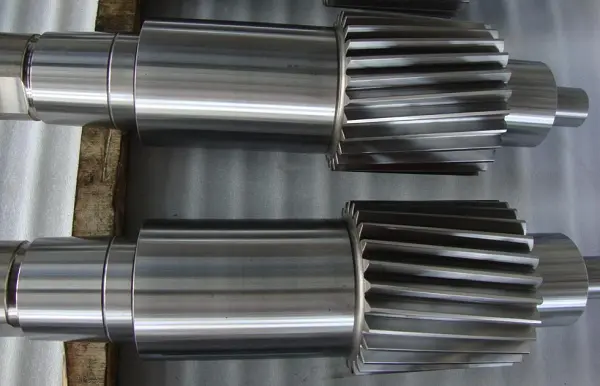
Knowledge
The Differences and Applications of C45 Steel and 40Cr Steel

Steel C45 and 40Cr are two commonly used medium carbon steels that are widely applied in mechanical manufacturing. However, there are significant differences in their chemical composition, properties, and applicable scenarios. The following is a detailed comparison:
1. Chemical composition comparison
|
Material |
Carbon(C) |
Main Alloy Elements |
Other Elements |
|
C45 |
0.42 - 0.50 % |
None |
Si, Mn |
|
40Cr |
0.37 - 0.44 % |
Cr 0.8 - 1.1 % |
Si, Mn & microelements of Ph and Su |
Key differences:
40Cr, due to the addition of chromium, is an alloy structural steel, while C45 steel is a common carbon steel.
The addition of chromium significantly enhances the hardenability, strength, and corrosion resistance of 40Cr.
2. Mechanical property comparison
|
Index |
C45 (Annealing / QT) |
40Cr (QT) |
|
Tensile Strength |
600 - 800 MPa |
800 - 1000 MPa |
|
Yield Strength |
355 MPa (Normalizing) |
≥785 MPa(QT) |
|
Hardness |
HRC 18 - 25 (Normalizing) |
HRC 25-32 (QT) |
|
Impact |
Low |
High (Cr improve toughness) |
Conclusion:
40Cr has higher strength and hardness, making it particularly suitable for parts that bear heavy loads or impact loads. C45 steel is less costly, but its overall performance is relatively weaker.
3. Heat Treatment Processes
C45 Steel:
Normalizing: Improves machinability (hardness HB ≤ 197).
Quenching and tempering (quenching + high-temperature tempering): Hardness HRC 20-30, used for general structural components.
Surface quenching: Enhances wear resistance (e.g., on gear surfaces).
40Cr:
Quenching and tempering (quenching + high-temperature tempering) is the core process, achieving a balance between high strength and toughness.
High-frequency quenching: Used for surface hardening (e.g., on shaft parts).
Difference: Due to the better quenchability of chromium in 40Cr, it is suitable for uniform quenching of large cross-section parts.
4. Typical Application Scenarios
|
Material |
Application for Spare Parts |
Application for Industry |
|
C45 |
Ordinary Shaft,Gear, Connecting rod,Bolts and the parts with ordinary loading capability |
Agriculture Machinery,Ordinary Machine Tool, Ordinary Structure Parts |
|
40Cr |
High strength Shaft, Gear, Connecting rod, Bolts and moulds etc. |
Drive Shaft, Engine Crankshaft, and Heavy Load Machinery |
Selection Principles:
C45 Steel: Suitable for scenarios where cost is a concern and the load is moderate.
40Cr: Appropriate for parts that require high strength, wear resistance, or have a larger cross-sectional size.
5. Machining and Welding Performance
Machinability: C45 steel is superior (lower hardness, less tool wear).
Weldability: Both require preheating (medium carbon steel is prone to cracking), but 40Cr, due to its chromium content, needs to be annealed after welding to relieve stress.
6. Price and Procurement
The price of 40Cr is approximately 20% to 30% higher than that of C45 steel (due to alloy composition).
For critical components, 40Cr is recommended; for non-critical parts, C45 steel can be chosen to reduce costs.
Summary: How to Choose?
Choose C45 steel: for parts with limited budgets, low loads, or no need for high-frequency heat treatment.
Choose 40Cr for parts that require high strength, high fatigue life, or large sizes that need deep quenching.
If there are still doubts, further analysis can be conducted based on specific working conditions (such as load, heat treatment conditions).
Vigor team has rich experience in producing die-forged and CNC machined C45 and 40Cr components. If you have question or any parts need to be developed, please feel free to contact us info@castings-forging.com



